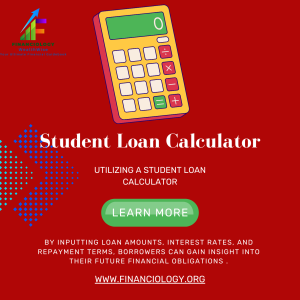Understanding The Federal Student Loans Types
9 min read
Demystifying Federal Student Loans:
A Guide to Understanding the Types Available
Navigate the world of federal student loans with confidence by exploring the different types available to students. Learn about Direct Subsidized Loans, Direct Unsubsidized Loans, Direct PLUS Loans, and more to make informed decisions about financing your education.
Federal student loans offer a variety of options to help students finance their education with favorable terms and borrower protections. Understanding the different types of federal student loans available is crucial for making informed decisions about your financial future. Let’s explore the key types:
Direct Subsidized Loans:
- Direct Subsidized Loans are available to undergraduate students with demonstrated financial need.
- The U.S. Department of Education pays the interest on these loans while the student is enrolled in school at least half-time, during the grace period, and deferment periods.
- Eligibility for Direct Subsidized Loans is determined based on the student’s financial need as calculated by the Free Application for Federal Student Aid (FAFSA).
Direct Unsubsidized Loans:
- Direct Unsubsidized Loans are available to undergraduate and graduate students regardless of financial need.
- Unlike subsidized loans, borrowers are responsible for paying the interest on unsubsidized loans during all periods, including while enrolled in school.
- Eligibility for Direct Unsubsidized Loans is not based on financial need, making them accessible to a broader range of students.
Direct PLUS Loans:
- Direct PLUS Loans are available to graduate students and parents of dependent undergraduate students to help cover educational expenses not covered by other financial aid.
- Unlike subsidized and unsubsidized loans, PLUS Loans require a credit check, and borrowers must not have an adverse credit history to qualify.
- The interest rates for Direct PLUS Loans are typically higher than those for subsidized and unsubsidized loans.
Direct Consolidation Loans:
- Direct Consolidation Loans allow borrowers to combine multiple federal student loans into a single loan with a fixed interest rate.
- Consolidation can simplify loan repayment by combining multiple payments into one and potentially extending the repayment term, reducing monthly payments.
- However, borrowers should carefully consider the implications of consolidation, as it may result in losing certain borrower benefits associated with the original loans.
Understanding the types of federal student loans available can empower you to make informed decisions about financing your education. Whether you’re an undergraduate or graduate student, exploring federal loan options can help you achieve your academic and career goals while minimizing financial stress.
Unlocking the Benefits of Direct Subsidized Loans:

Your Guide to Affordable Education Financing
Discover the advantages of Direct Subsidized Loans for undergraduate students, including interest-free borrowing during enrollment, grace periods, and deferment. Learn about eligibility requirements, the application process, and tips for responsible borrowing.
Direct Subsidized Loans, offered by the U.S. Department of Education, provide undergraduate students with a financially advantageous option for funding their education. Let’s delve into the key features and benefits of these loans:
Interest Subsidy:
- One of the primary benefits of Direct Subsidized Loans is the interest subsidy provided by the federal government.
- While enrolled in school at least half-time, during the grace period after leaving school, and during authorized deferment periods, the government pays the interest on these loans.
- This subsidy reduces the overall cost of borrowing for students, making Direct Subsidized Loans a more affordable option compared to other types of student loans.
Eligibility Requirements:
- To qualify for Direct Subsidized Loans, undergraduate students must demonstrate financial need as determined by the Free Application for Federal Student Aid (FAFSA).
- Additionally, students must be enrolled at least half-time in a degree or certificate program at an eligible institution to be eligible for these loans.
- Unlike Direct Unsubsidized Loans, which are available to all students regardless of financial need, Direct Subsidized Loans are reserved for students with demonstrated financial need.
Borrowing Limits:
- The amount students can borrow through Direct Subsidized Loans is subject to annual and aggregate limits determined by the student’s academic level and dependency status.
- These limits are designed to ensure that students borrow responsibly and do not exceed their financial needs or the cost of attendance at their institution.
- It’s important for students to carefully consider their borrowing needs and explore other forms of financial aid, such as scholarships and grants, before taking out loans.
Repayment Options:
- Direct Subsidized Loans offer flexible repayment options, including income-driven repayment plans and loan forgiveness programs for eligible borrowers.
- Repayment typically begins six months after the student graduates, leaves school, or drops below half-time enrollment.
- Students can explore repayment options and choose the plan that best fits their financial circumstances and goals.
Direct Subsidized Loans offer undergraduate students a valuable opportunity to finance their education affordably. By taking advantage of the interest subsidy and exploring responsible borrowing practices, students can minimize the financial burden of student loans and focus on achieving their academic and career aspirations.
Direct Unsubsidized Loans:

Empowering Students with Flexible Education Financing
Learn about the benefits of Direct Unsubsidized Loans for undergraduate and graduate students, including eligibility criteria, borrowing limits, and repayment options. Discover how these loans can help bridge the gap in funding your higher education journey.
Direct Unsubsidized Loans are a valuable resource for students seeking to finance their undergraduate or graduate education. Unlike Direct Subsidized Loans, these loans do not require a demonstration of financial need and accrue interest throughout the borrowing period. Let’s explore the key features and benefits:
Accessibility:
- Direct Unsubsidized Loans are available to both undergraduate and graduate students, regardless of financial need.
- Unlike Direct Subsidized Loans, which have eligibility requirements based on financial need, Direct Unsubsidized Loans offer broader access to students seeking financial assistance for their education.
Interest Accrual:
- Unlike Direct Subsidized Loans, where the government covers the interest during specific periods, interest on Direct Unsubsidized Loans accrues from the time the loan is disbursed.
- While students are not required to make payments while enrolled in school, during the grace period, or authorized deferment periods, the interest continues to accrue, adding to the overall cost of the loan.
Borrowing Limits:
- The amount students can borrow through Direct Unsubsidized Loans is determined by their academic level and dependency status, as well as the cost of attendance at their institution.
- Undergraduate students may be eligible for both subsidized and unsubsidized loans, while graduate students are only eligible for unsubsidized loans.
Repayment Options:
- Direct Unsubsidized Loans offer flexible repayment options, including standard repayment, extended repayment, and income-driven repayment plans.
- Repayment typically begins six months after the student graduates, leaves school, or drops below half-time enrollment.
- Students can explore different repayment plans and choose the option that best fits their financial circumstances and goals.
Direct Unsubsidized Loans provide students with a flexible and accessible option for financing their education. While interest accrual adds to the overall cost of borrowing, these loans offer valuable support for students seeking to bridge the gap in funding their higher education journey.
By understanding the features and repayment options of Direct Unsubsidized Loans, students can make informed decisions to support their academic and career aspirations.
Direct PLUS Loans:
Funding Your Graduate Education with Confidence
Explore the benefits of Direct PLUS Loans for graduate and professional students and parents of dependent undergraduate students. Learn about eligibility requirements, borrowing limits, and repayment options to make informed decisions about financing higher education.
Direct PLUS Loans offer graduate and professional students, as well as parents of dependent undergraduate students, a valuable option for financing higher education expenses. Let’s delve into the key features and benefits of these loans:
Eligibility:
- Direct PLUS Loans are available to graduate or professional students enrolled at least half-time in an eligible program or to parents of dependent undergraduate students.
- Unlike Direct Subsidized and Unsubsidized Loans, PLUS Loans require a credit check. However, borrowers with adverse credit history may still be eligible by obtaining an endorser or demonstrating extenuating circumstances.
Borrowing Limits:
- The maximum amount that can be borrowed through Direct PLUS Loans is determined by the cost of attendance at the student’s institution minus any other financial aid received.
- Graduate and professional students can borrow up to the full cost of attendance, while parents of dependent undergraduate students can borrow up to the cost of attendance minus other financial aid.
Interest Rates and Fees:
- Direct PLUS Loans have fixed interest rates set by the federal government. As of 2024, the interest rate for Direct PLUS Loans is 8.05%, and there is an additional loan fee charged at disbursement.
- Borrowers need to consider the overall cost of borrowing, including interest accrual and fees when evaluating their loan options.
Repayment Options:
- Direct PLUS Loans offer flexible repayment options, including standard repayment, extended repayment, and income-driven repayment plans.
- Repayment typically begins within 60 days after the loan is fully disbursed, but borrowers may qualify for deferment or forbearance if they experience financial hardship or meet other eligibility criteria.
Benefits for Graduate and Professional Students:
- Direct PLUS Loans can help graduate and professional students cover the cost of tuition, fees, and other education-related expenses not covered by other financial aid.
- These loans offer competitive interest rates and flexible repayment options, making them a valuable resource for students pursuing advanced degrees.
Direct PLUS Loans provide graduate and professional students, as well as parents of dependent undergraduate students, with a flexible and accessible option for financing higher education expenses.
By understanding the features, eligibility requirements, and repayment options of PLUS Loans, borrowers can make informed decisions to support their academic and financial goals.
Recent Blogs:
- A Guide to Consolidating Graduate Student Loans
- Discover Essential Credit Card Tips and Tricks
- Understanding the Types of Student Loans
- Comprehensive Guide to Personal Loans
- How to Save Money Without Sacrificing?
- The World of Financial Services
Direct Consolidation Loans:
Streamlining Your Student Loan Repayment Journey
Discover the benefits of Direct Consolidation Loans for simplifying the repayment process and managing multiple federal student loans. Learn about eligibility criteria, consolidation options, and repayment plans to take control of your student loan debt.
Direct Consolidation Loans offer a convenient solution for borrowers looking to streamline their student loan repayment journey by combining multiple federal student loans into a single loan. Let’s explore the key features and benefits of Direct Consolidation Loans:
Simplified Repayment:
- One of the primary benefits of Direct Consolidation Loans is simplifying the repayment process by consolidating multiple federal student loans into a single loan with one monthly payment.
- Instead of managing multiple payments to different loan servicers with varying due dates and terms, borrowers can make a single payment to one loan servicer, making it easier to stay organized and on top of payments.
Fixed Interest Rate:
- Direct Consolidation Loans offer a fixed interest rate, which is determined by taking the weighted average of the interest rates on the loans being consolidated and rounding up to the nearest one-eighth of a percent.
- A fixed interest rate provides borrowers with predictability and stability, as their interest rate will not change over the life of the consolidation loan, regardless of market fluctuations.
Extended Repayment Term:
- Consolidating federal student loans may extend the repayment term, allowing borrowers to spread out their payments over a longer period.
- While extending the repayment term may result in lower monthly payments, it’s important to note that it may also result in paying more interest over the life of the loan.
Eligibility Criteria:
- To qualify for a Direct Consolidation Loan, borrowers must have at least one federal student loan in grace, repayment, deferment, or default status.
- Private student loans are not eligible for consolidation through the Direct Consolidation Loan program.
Repayment Options:
- Direct Consolidation Loans offer a variety of repayment options, including standard repayment, extended repayment, graduated repayment, and income-driven repayment plans.
- Borrowers can choose the repayment plan that best fits their financial situation and goals, allowing for flexibility and customization.
In conclusion, Direct Consolidation Loans provide borrowers with a convenient and flexible option for managing their federal student loan debt. By consolidating multiple loans into one and exploring repayment options, borrowers can simplify their repayment journey and take control of their finances.






